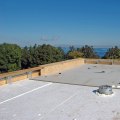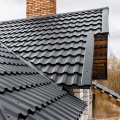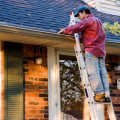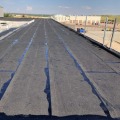Flat roofs are often seen as a more economical and efficient option for homeowners, as they require less labor and materials to construct than their sloped counterparts. This can result in a complete replacement taking just one day. However, there are advantages and disadvantages to both types of roofing systems. Shingles are much cheaper than membrane systems, and are also easier to install, making them a more cost-effective option for flat roofs.
Sloped roofs have the advantage of lower maintenance costs due to the ease of replacing shingles and locating water leaks. Additionally, they are better able to shed water quickly after rain, making them less likely to leak. On the other hand, flat roofs have a smaller surface area than sloped roofs, but they are also more energy efficient. This is because they require less maintenance for siding, windows, doors, and decks.
Flat roofs are also associated with a more modern design, while sloped roofs are better suited for wetter climates due to their ability to withstand moisture damage. Mineral felt is traditionally used for flat roofs, which is then covered with a thin layer of stone fragments to protect it from ultraviolet sunlight. However, homeowners should contact qualified roofing contractors to determine the best type of roof for their home. A membrane system is also an option for flat roofs, which allows stagnant water to drain. In conclusion, both flat and sloped roofs have their advantages and disadvantages. Homeowners must consider both design and practicality when deciding between the two types of roofing systems.
An experienced and reliable roofing contractor is the best choice for building a durable and functional roof.



